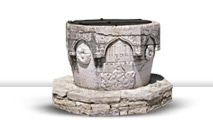
- Sečovlje Salt Pans - Dragonja River Valley
- Sv. Peter - Nova vas - Padna
- Pomjan - Nature Park: Karst Edge - Socerb
- Črni Kal - Osp - Kubed
- Momjan - Grožnjan - Pietrapelosa - Mirna
- Baštija - Kostanjica - Parenzana
- Oprtalj - Završje - Livade - Zrenj
- Istarske toplice - Motovun Forest - Višnjan
- Cave Mramornica - Feštini Kingdom - Cave Baredine
- Lim Bay - Kloštar - Kontija - Dvigrad
- Kanfanar - Bale - Palud - Vodnjan -Islands Brijuni - Fažana
- Svetvinčenat - Tinjan - Pićan - Gračišće
- Belaj - Šumber - Kožljak - Paz
- Čepićko Field - Kršan - Boljun Castle - Lupoglav
- Plomin - Kvarner Gulf - Brseč
- Nature park Učka - Mošćenice
Sv. Peter - Nova vas - Padna
Sv. Peter
The three leaf clover of Istrian villages is a protected cultural heritage site, and its inhabitants mostly engage in olive and grape growing.
Sv. Peter was first mentioned in the beginning of the 11th c., and in the 13th c. it came under the rule of Venice. In the first geographical map of Istria dating from the 16th c. it was recorded as S. Pietro dell'Amata and from 1954 to 1992 the...
More

Nova vas
Nova Vas or Villa Noua was mentioned in written sources as early as the 13th c.
The village stands on a small hill, descending into the valley of the Drnica stream and southern part of the Dragonja River.
In the old days the inhabitants of this fertile part of the Karst engaged in grape growing, olive growing, animal husbandry and crafts. Today, they are winemakers and olive oil...
More

Padna
Padna was mentioned in written sources in the beginning of the 12th c., and was included in the first geographical map of Istria in the 16th c. as Padena. The original settlement formed by the cemetery, proof of which are the archaeological remains dating from the 2nd c. The Church of St. Blaise from the 12th c. keeps a holy water font with a marble pedestal from the beginning of the 9th c. Beside the...
More
 Print page Send to a friend
Print page Send to a friend















